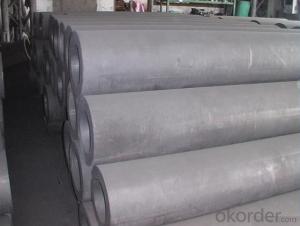Carbon Electrode for Silicon Metal Production
- Loading Port:
- Tianjin
- Payment Terms:
- TT OR LC
- Min Order Qty:
- 20 m.t.
- Supply Capability:
- 800 m.t./month
OKorder Service Pledge
OKorder Financial Service
You Might Also Like
Spcifications
1:carbon eletrode
2:for ferroalloy,calcium carbide, silicon metal, manufacture
Product Description
Carbon Electrode is abaked electrode used in submerged arc furnaces for delivering power to the charge mix. Electrode is added to the top of the electrode column cylindrical form. Electrode is essentially a mix of Electrically Calcined Anthracite (ECA) or Calcined Petroleum Coke (CPC) with Coal Tar Pitch and is baked for weeks, it is widly used for ferroally productiong, silicon metal production etc.
Graphite/Carbon Electrode Paste Specification:
| PARAMETER UNIT GUARANTEE VALUE | ||||||
| Items | Φ500~Φ700 | Φ750~Φ960 | Φ1020~Φ1400 | |||
| Rs μΩ.m | ≤45 | ≤38 | ≤45 | ≤38 | ≤40 | |
| Bulk Desity g/cm3 | ≥1.55 | ≥1.58 | ≥1.55 | ≥1.58 | ≥1.55 | ≥1.58 |
| Bending Strength MPa | 3.5~7.5 | 4.0~7.5 | 3.5~7.5 | 4.0~7.5 | 3.5~7.5 | 4.0~7.5 |
| Compressive Strength MPa | ≥20.0 | ≥20.0 | ≥20.0 | ≥20.0 | ≥19.0 | ≥19.0 |
| Compressive Strength MPa | 3.2~4.8 | 3.0~4.6 | 3.2~4.8 | 3.0~4.6 | 3.2~4.8 | 3.0~4.6 |
| Ash % | ≤2.5 | ≤2.0 | ≤2.5 | ≤2.0 | ≤2.5 | ≤2.0 |
Picture:
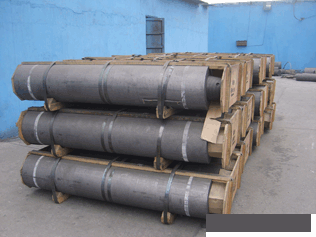
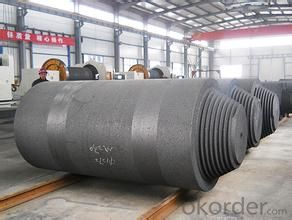
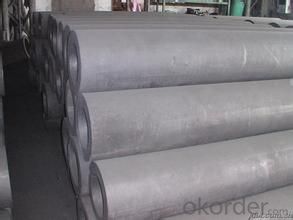
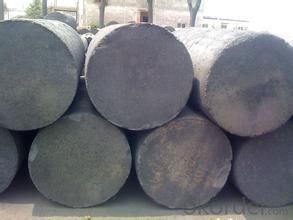
We Also supply all kind of carbon electrode paste and below materials, please contact us if you have any enquiry about it.
Calcined Anthracite
Calcined Petroleum Coke
Coke (Met Coke, Foundry Coke, Semi Coke)
Company information:
China National Building Materials Group is a stated -owned enterprise in charge of administrative affairs in China buiding materials industry.Established in 1984 CNBM is a large group corporation of building materials with total assets of 25 billion and a total stuff of 30000 CNBM now owns 200 subordinating firms of solely owned and joint-venture companies.
- Q:Material characteristics of carbon fiber
- This allows carbon fibers to have the highest specific strength and specific modulus in all high-performance fibers. Compared with the metal materials such as titanium, steel and aluminium, carbon fiber has the characteristics of high strength, high modulus, low density and low coefficient of linear expansion. It can be called the "king of new materials". In addition to carbon fiber with general characteristics of carbon material, its appearance has obvious anisotropy and soft, can be processed into a variety of fabrics, and the proportion of small, along the fiber axis show a very high strength carbon fiber reinforced epoxy resin composites, the strength and modulus of composite indicator in the existing structural materials is the highest. The tensile strength of carbon fiber resin composite materials are generally in more than 3500 MPa, is 7 to 9 times that of steel, the tensile modulus of 230 to 430G were also higher than that of steel; therefore the specific strength of CFRP material intensity and density can be achieved above 2000 MPa, the specific strength of A3 steel is only 59 MPa.
- Q:How does carbon affect air quality?
- Carbon can have both positive and negative effects on air quality. On one hand, carbon dioxide (CO2) is a natural component of the Earth's atmosphere and is necessary for the survival of plants and photosynthesis. However, excessive amounts of CO2 can contribute to the greenhouse effect, leading to global warming and climate change. Additionally, carbon monoxide (CO), a byproduct of incomplete combustion, is a harmful pollutant that can negatively impact air quality. It is primarily emitted from vehicles, industrial processes, and residential heating systems. High levels of carbon monoxide can impair the delivery of oxygen to the body, leading to various health issues, including headaches, dizziness, and in extreme cases, even death. Furthermore, carbon-containing compounds such as volatile organic compounds (VOCs) can contribute to the formation of ground-level ozone, a harmful pollutant. Ground-level ozone can cause respiratory problems, aggravate existing respiratory conditions, and reduce lung function. VOCs are emitted from various sources, including vehicle emissions, industrial processes, and certain household products. In conclusion, while carbon dioxide is essential for life on Earth, excessive amounts can contribute to climate change. On the other hand, carbon monoxide and volatile organic compounds emitted from human activities can negatively impact air quality and human health. Therefore, it is crucial to reduce carbon emissions and adopt cleaner technologies to mitigate the adverse effects of carbon on air quality.
- Q:How long will it last? 10National Day would like to do carbon baking ribs at home, how to do, how to marinate? For how long?.. Don't copy sticky posts. Now, tour TV's "eating meat" on earth is recorded in a grilled pork chop, wondering how that is done
- Raw material: pork ribsPractice:1, pig ribs cut into several sections of the same size.2, marinate with seasoning, put half a day, can also be the night before pickling, put into the refrigerator.(seasoning: soy sauce, oyster sauce, cooking wine, sugar, geraniol, cinnamon, anise, pepper, garlic, ginger, red pepper)3, put into the microwave oven, high heat for five minutes, in order to make the ribs faster cooked.Pan, covered with foil, preheat the oven to 180 degrees, 180 degrees inside, keep on, under fire, and cook for twenty minutes, during which out of turn two times. (the temperature is too high, will be outside coke is not familiar)5, put the pan bottom oil, add a tablespoon of old godmother flavor stir fermented black bean sauce, and then pickled pork ribs with feed juice poured into, boil, thicken, pour in the ribs. (with some colorful vegetables.)
- Q:What are the impacts of carbon emissions on biodiversity?
- Carbon emissions have significant impacts on biodiversity. One of the main consequences is climate change, which is caused by the release of greenhouse gases, including carbon dioxide, into the atmosphere. As the Earth's temperature rises, it disrupts the delicate balance of ecosystems, leading to the loss of biodiversity. One of the major effects of climate change on biodiversity is habitat loss. Many species are adapted to specific environmental conditions, and as these conditions change, their habitats become unsuitable. This can lead to the extinction of species that are unable to adapt or migrate to new areas. Coral reefs, for example, are highly sensitive to temperature changes, and as the ocean becomes warmer due to carbon emissions, many coral species are at risk of bleaching and dying off. Another impact of carbon emissions on biodiversity is the disruption of ecological interactions. Many species rely on specific relationships with other species for survival, such as pollination or predation. Climate change can alter the timing of these interactions, potentially causing mismatches between species. For example, if flowering plants bloom earlier in the year due to warmer temperatures, but their pollinators are not yet active, it can result in reduced pollination and reproductive success. Carbon emissions also contribute to ocean acidification, which is the absorption of carbon dioxide by seawater, leading to a decrease in pH. This acidification affects marine organisms, particularly those with calcium carbonate shells or skeletons, such as corals, mollusks, and some plankton. The increased acidity makes it difficult for these organisms to build and maintain their protective structures, potentially leading to population declines and ecosystem disruptions. Overall, the impacts of carbon emissions on biodiversity are far-reaching and profound. They not only threaten individual species but also disrupt entire ecosystems and their functioning. To mitigate these effects, it is crucial to reduce carbon emissions and transition to cleaner, more sustainable energy sources. Additionally, conserving and restoring habitats, implementing effective conservation strategies, and promoting sustainable land and water management practices can help protect and restore biodiversity in the face of climate change.
- Q:How does carbon impact food production?
- Carbon impacts food production in several ways. Firstly, carbon dioxide (CO2) is a crucial component for photosynthesis, the process through which plants convert sunlight into energy. Increased levels of atmospheric CO2 can enhance plant growth and crop yields. However, excessive carbon emissions from human activities, such as burning fossil fuels, contribute to the greenhouse effect, leading to climate change. Climate change affects food production by altering temperature and rainfall patterns, increasing the frequency and intensity of extreme weather events like droughts, floods, and storms. These changes disrupt agricultural systems, decrease crop productivity, and threaten food security. Additionally, carbon emissions contribute to air pollution, which can harm crop health and reduce yields. Therefore, managing carbon emissions and mitigating climate change are crucial for sustainable and resilient food production.
- Q:What are the carbon monoxide collection methods?
- It can only be collected by drainage. Carbon monoxide is not soluble in water. Because carbon monoxide is poisonous and the density is very close to the air, it can not be collected by exhaust air
- Q:How many electrons does carbon have?
- There are 6 electrons in carbon.
- Q:How does carbon affect the formation of haze?
- Carbon plays a significant role in the formation of haze as it is a major component of particulate matter, especially in the form of black carbon or soot. When released into the atmosphere through incomplete combustion processes, carbon particles can contribute to the formation of haze by scattering and absorbing sunlight. This leads to reduced visibility and the formation of a fog-like, hazy appearance in the air. Additionally, carbon particles can act as nuclei for the condensation of water vapor, further enhancing haze formation and the persistence of foggy conditions.
- Q:What is carbon neutral certification?
- Carbon neutral certification is a recognition given to individuals, organizations, or products that have successfully reduced their carbon footprint to zero by balancing their greenhouse gas emissions with an equivalent amount of carbon offsets or renewable energy. It signifies a commitment to mitigating the negative environmental impact and contributing to a more sustainable future.
- Q:In Japanese, what's the difference between adding "carbon" and "sauce" after the name?
- Japanese in the name behind the general "San" (similar to the Chinese pronunciation: Mulberry) respect.This "carbon" was originally a child to say the "San" (sang) the time because the enunciation is not very clear, so it is easy to say "carbon".
1. Manufacturer Overview |
|
|---|---|
| Location | |
| Year Established | |
| Annual Output Value | |
| Main Markets | |
| Company Certifications | |
2. Manufacturer Certificates |
|
|---|---|
| a) Certification Name | |
| Range | |
| Reference | |
| Validity Period | |
3. Manufacturer Capability |
|
|---|---|
| a)Trade Capacity | |
| Nearest Port | |
| Export Percentage | |
| No.of Employees in Trade Department | |
| Language Spoken: | |
| b)Factory Information | |
| Factory Size: | |
| No. of Production Lines | |
| Contract Manufacturing | |
| Product Price Range | |
Send your message to us
Carbon Electrode for Silicon Metal Production
- Loading Port:
- Tianjin
- Payment Terms:
- TT OR LC
- Min Order Qty:
- 20 m.t.
- Supply Capability:
- 800 m.t./month
OKorder Service Pledge
OKorder Financial Service
Similar products
New products
Hot products

